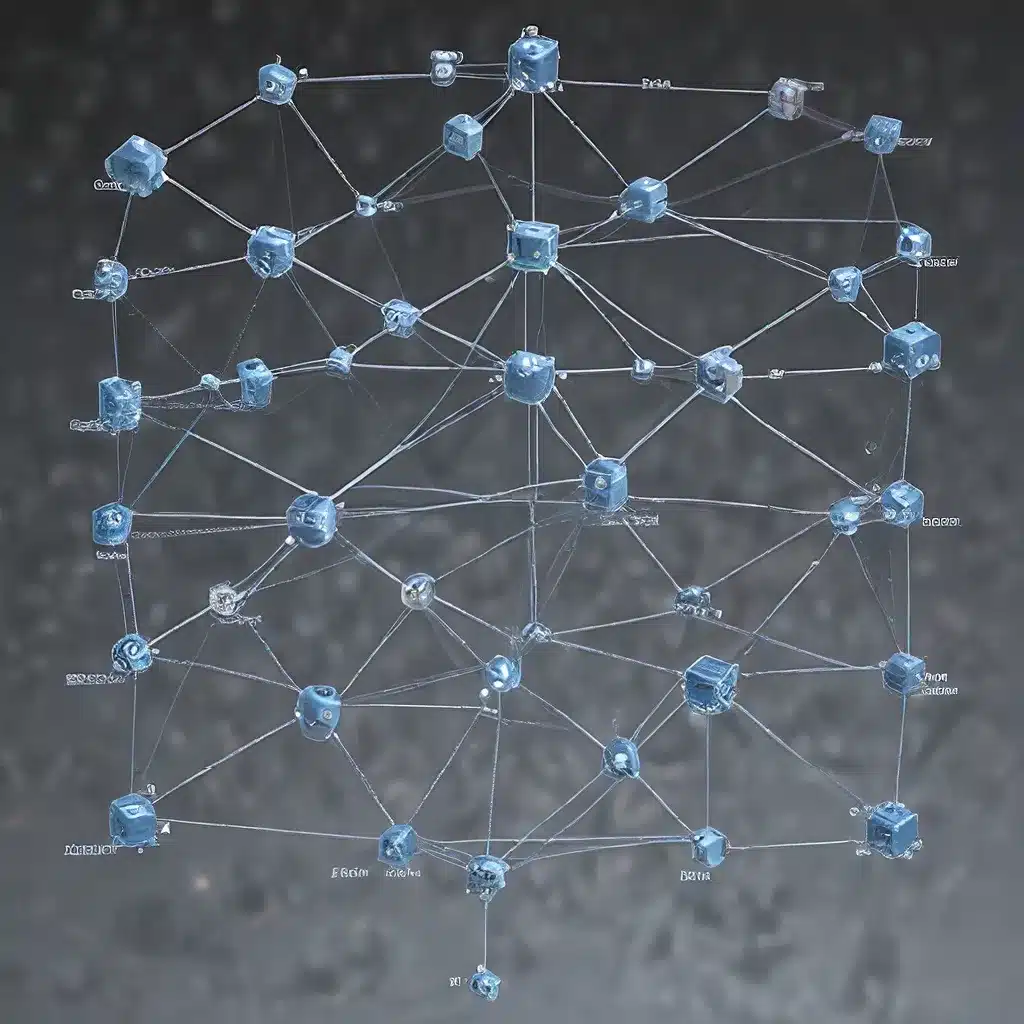
In the rapidly evolving world of sensor networks and the Internet of Things (IoT), the coordination and collaboration of distributed sensor nodes are crucial for achieving efficient, scalable, and reliable systems. As the complexity of sensor network applications continues to grow, designing effective distributed algorithms has become a fundamental challenge for researchers and engineers alike.
The Importance of Distributed Coordination in Sensor Networks
Sensor networks are inherently distributed systems, with numerous interconnected nodes responsible for tasks such as data collection, processing, and communication. Effective coordination among these nodes is essential to maximize the network’s performance, resilience, and energy efficiency. Without proper coordination, sensor networks can suffer from issues like data redundancy, communication congestion, and unbalanced energy consumption, ultimately limiting their scalability and real-world applications.
Distributed coordination algorithms play a pivotal role in addressing these challenges. These algorithms enable sensor nodes to collaborate autonomously, making decisions and adjusting their behavior based on local information and interactions with neighboring nodes. By leveraging distributed intelligence, sensor networks can achieve greater adaptability, fault tolerance, and responsiveness to dynamic environmental conditions.
Approaches to Distributed Coordination in Sensor Networks
Researchers have explored various approaches to tackle the challenge of distributed coordination in sensor networks. Here are some of the key strategies and their associated benefits:
Peer-to-Peer Coordination
Peer-to-Peer (P2P) coordination algorithms allow sensor nodes to interact directly with their neighbors, without the need for a centralized control mechanism. This approach promotes scalability and resilience, as the network can continue functioning even if individual nodes fail or become unavailable. P2P coordination often relies on gossip-based protocols, where nodes exchange information and make local decisions in a decentralized manner.
Swarm Intelligence
Swarm intelligence techniques, inspired by the collective behavior of natural systems like ant colonies or bird flocks, have been applied to sensor network coordination. These algorithms leverage simple, local rules and self-organization principles to enable sensor nodes to coordinate their actions and achieve emergent, global-level optimization. Swarm-based approaches can be highly adaptable and robust to dynamic network conditions.
Bio-Inspired Coordination
Drawing inspiration from biological systems, researchers have developed bio-inspired coordination algorithms for sensor networks. These algorithms mimic the adaptive, collaborative, and self-healing properties observed in natural phenomena, such as the pheromone-based communication of ants or the flocking behavior of birds. By incorporating these bio-inspired principles, sensor networks can exhibit self-organization, load balancing, and fault tolerance akin to their natural counterparts.
Optimization-Based Coordination
Optimization-based coordination approaches leverage mathematical optimization techniques, such as game theory, linear programming, or evolutionary algorithms, to guide the decision-making and resource allocation among sensor nodes. These algorithms aim to maximize performance metrics, such as network lifetime, data throughput, or coverage, while considering constraints like energy consumption, communication range, or sensing capabilities.
Hierarchical Coordination
In hierarchical coordination schemes, sensor networks are organized into a multi-level hierarchy, where cluster heads or coordinators manage the activities of subordinate nodes. This approach can improve scalability, energy efficiency, and task allocation by delegating decision-making to higher-level nodes, while maintaining local autonomy for individual sensors.
Addressing Security and Energy Challenges in Sensor Networks
As sensor networks become increasingly ubiquitous, addressing security and energy management concerns is crucial for their widespread adoption and reliable operation.
Security Considerations
Sensor networks are vulnerable to various security threats, such as data eavesdropping, node compromises, and denial-of-service attacks. Distributed coordination algorithms must incorporate secure communication protocols, intrusion detection mechanisms, and resilient data routing to mitigate these risks. Techniques like cryptography, authentication, and anomaly detection can enhance the overall security of sensor networks.
Energy Management
Sensor nodes are often battery-powered and operate in resource-constrained environments, making energy efficiency a primary design consideration. Distributed coordination algorithms must optimize energy consumption by load balancing, duty cycling, and adaptive communication strategies. Energy harvesting techniques, such as solar or vibrational power, can further improve the sustainability of sensor networks.
Emerging Applications and Future Trends
The advancements in distributed coordination algorithms have enabled a wide range of real-world applications for sensor networks, including:
- Environmental monitoring: Sensor networks can be deployed to track climate change, wildlife, or natural disasters in remote areas.
- Smart cities: Sensor-equipped infrastructures can monitor traffic, air quality, water distribution, and energy usage to optimize urban planning and resource management.
- Industrial automation: Sensor networks can enhance process control, predictive maintenance, and quality assurance in manufacturing environments.
- Healthcare: Wearable sensors can monitor patient vital signs, medication adherence, and activity levels to improve personalized and preventive healthcare.
As the IoT ecosystem continues to evolve, the demand for scalable, secure, and energy-efficient sensor networks will only grow. Emerging trends in distributed coordination algorithms include machine learning-based optimization, 5G and edge computing integration, and blockchain-enabled decentralized coordination. These advancements will further expand the capabilities and impact of sensor networks in various domains, revolutionizing the way we interact with and understand our physical world.
Conclusion
Distributed coordination algorithms are the backbone of efficient and resilient sensor networks, enabling collaboration, scalability, and adaptability in the face of complex, dynamic environments. By leveraging techniques like peer-to-peer, swarm intelligence, and bio-inspired approaches, researchers and engineers are driving the evolution of sensor network technologies, unlocking new possibilities for environmental monitoring, smart cities, industrial automation, and healthcare. As the IoT landscape continues to evolve, the importance of distributed coordination algorithms will only grow, ensuring that sensor networks remain a crucial component in shaping the future of our interconnected world.